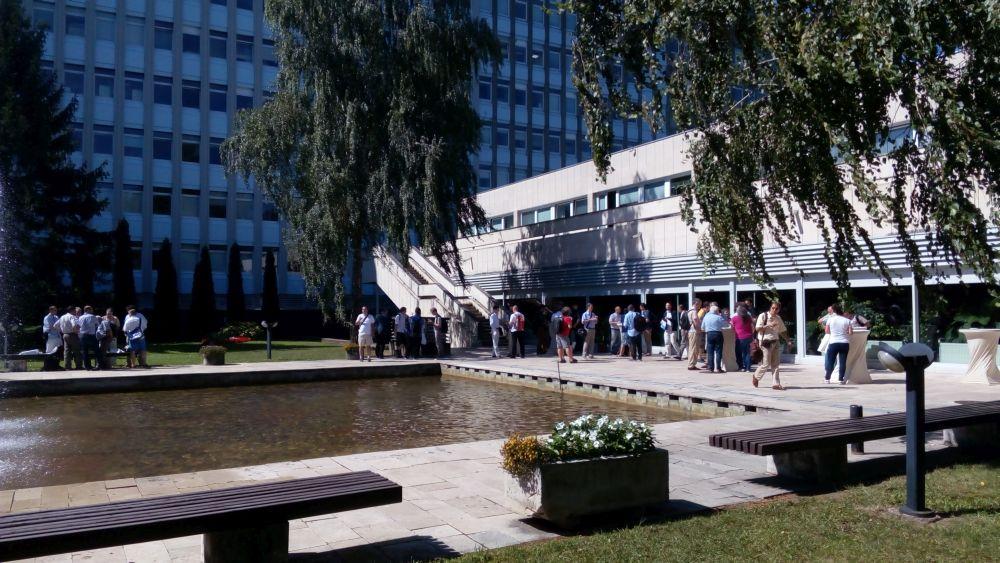Hungarian Physics Conference held in Szeged

The conference had 350 participants, mostly from research institutions of the Hungarian Academy of Sciences, major universities and the ELI-ALPS research facility. In addition, many teachers attended. More than half of the participants presented their work in a session talk or on posters. The meeting was primarily organised by the Roland Eötvös Physical Society, while local organising was done by members of the Institute of Physics of the University of Szeged and the Research Centre for Biology, which hosted the event in its lecture rooms and lecture theater.
The Hungarian leg of the EU sponsored three ELI-ALPS facilities are currently being built within the boundaries of Szeged. Therefore, the main theme of the meeting was the science that the ELI-ALPS laser facility will bring to the physics community in Hungary. An overview of the ELI-ALPS project was given by Dimitrios Charalambidis, the lead scientist of the project and several details were discussed in many sessions during the conference.
ESS presented for young as well as experienced scientists
Other large EU projects, such as the European Spallation Source was also present in the talks where the timeline and research plans of the facility was presented. The interest among the young people was quite intense, but the senior scientist also expressed their interest in the further possibilities in areas such as biology, material science, soft matter and magnetic fields.
One of the most anticipated events of the conference was a panel discussion about the reintegration of (mostly young) researchers returning from abroad. The discussion was attended by Dr. Laszlo Palkovics (State Minister for Schools), and Dr. Jozsef Palinkas (president of the National Research, Development and Innovation Office). During the course of the discussion, Hungarian participation at the ILL, ESS, CERN and other large scale research facilities were discussed in detail.




 is funded by the European Union Framework Programme for Research and Innovation Horizon 2020, under grant agreement 676548.
is funded by the European Union Framework Programme for Research and Innovation Horizon 2020, under grant agreement 676548.